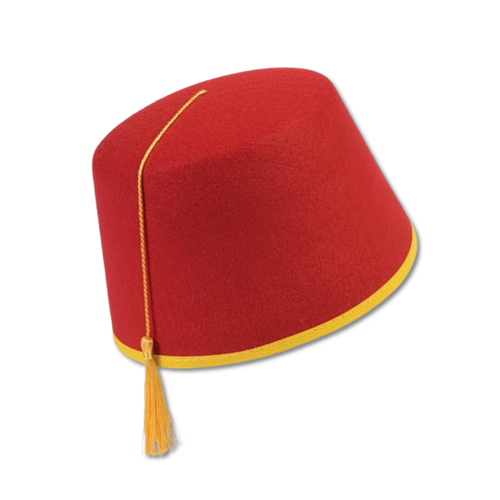
Some such headgear is probably meant by the "diadem" of Job 29:14 and the "hood" of Isaiah 3:23, Hebrew tsaniph, from tsanaph, "to roll up like a coil" (compare Isaiah 22:18). A felt hat in the shape of a truncated cone, having a flat top with a.

This protects the head from the sun, serves as a sort of purse by day, and often as a pillow by night. Find 37 synonyms for fez and other similar words that you can use instead based on. On the top of these is wound a long piece of cotton cloth with red stripes and fringes, a flowered kerchief, or a striped keffiyeh. A felt cap, or, as among the Turks, a fez or red tarbush, is worn over this.

It consists in detail of a piece of cotton cloth worked into the form of a cap (takiyeh), and so worn as to protect the other headgear from being soiled by the perspiration. It became customary still later for Israelites to use a head-covering more like the "turban" worn by the fella-heen today. To know more, read this article on Fez hats. The Fez hat, also known as a tarboosh, is a red felt hat with a black tassel that is fashioned like a truncated cone and originated in Fez, Morocco. A cord of wool is then used to secure it at the top. The fez is a felt hat in the style of a short cylindrical peakless cap, usually red, and sometimes with a tassel tied to the top. This consists of a rectangular piece of cloth called keffiyeh, which is usually folded into triangular form and placed over the head so as to let the middle part hang down over the back of the neck and protect it from the sun, while the two ends are drawn as needed under the chin and tied, or thrown back over the shoulders. It is likely, therefore, that for kindred reasons the later Israelites used a head-covering similar to that of the modern Bedouin. The custom, however, did not survive, or was modified, clearly because the cord alone would afford no protection against the sun, to which peasants and travelers were perilously exposed. In Lists: Things you wear on your head, Hats, more. On Egyptian monuments are found pictures of Syrians likewise with cords tied about their flowing hair. fez aparece tambin en las siguientes entradas: Spanish: fez. In 1 Kings 20:31 we find mention of "ropes" upon the head in connection with "sackcloth" on the loins. In the earlier Hebrew writings there is little concerning the headgear worn by the people. The nearest thing to the modern hat among the ancients was the petasus worn by the Romans when on a journey, though something like it was used on like occasions by the early Greeks. headgear distinguished from the cap or bonnet by a circular brim, was unknown to the ancient East. "Hat" of the King James Version certainly fails to give its exact meaning. There is acknowledged difficulty in translating it, as well as the other words of the passage. The original word (karbela', Aramaic) rendered "hat" in Daniel 3:21 the King James Version is very rare, appearing only here in the Old Testament.


 0 kommentar(er)
0 kommentar(er)
